Estimated reading time: 6 minutes

If you’ve decided to prepare your family for a disaster, storing food will probably be one of your first major projects. Having emergency food on hand can help you get through anything from snowstorms to economic hardship, or even large-scale disasters.
Storing food at home is fairly easy and affordable if you take your time and do it right. If you make any mistakes, your food could end up going bad and you'll not only be without food in an emergency, you'll be out a lot of money. Here are some common food storage mistakes to avoid.
Want to save this post for later? Click Here to Pin It On Pinterest!
1. Storing Food in Humid Rooms
Humidity can quickly ruin stored food. Obviously, any food that isn’t perfectly sealed in an airtight container could grow mold, making it inedible. Also, anything made of metal–from store-bought canned food to home canning jar lids–can rust in humid environments. This can let in bacteria and quickly make your food storage unsafe to eat.
2. Storing Food Where Sunlight Hits
All foods store best in dark places. Sunlight can deteriorate food as well as the containers it's stored in. When some containers degrade, they release toxins into your food. At best, you'll end up with food that's less nutritious. And at worst, you'll end up with food that makes you sick.
3. Not Choosing Proper Storage Containers
When you’re storing food, it’s important to choose appropriate containers for the various types of food you’re storing. Some foods are better when stored in the proper containers. For example, delicate foods like dried vegetable should be stored in airtight containers like mason jars rather than bags so they aren’t crushed.
However, many foods will go bad if they’re not properly stored. Whole grains, for example, should be stored with oxygen absorbers to stop any pest or bacteria activity. Don’t risk your food supply! Always do your research and move foods to proper containers.
4. Not Rotating Stored Foods
Unfortunately, food storage isn’t as simple as tossing some bulk foods into your pantry and leaving them until there’s an emergency. Proper food storage takes regular maintenance and management. In the event of a disaster, you want your stored foods to last as long as possible, so you should constantly be rotating through them.
Always eat the foods closest to expiring first and replace them with fresh food. You don’t want to end up with what you believe to be a year's worth of food only to realize it’s all gone bad. Even if it’s still edible, expired foods will be much less nutritious, and it’s important to stay as healthy as possible in a real survival situation.
5. Purchasing Food You Don’t Actually Like
There’s loads of information available on what foods preppers should buy. However, just because you can buy and store a lot of something doesn’t mean you should. If your family won’t eat what you’re storing, it will be tough to rotate through your food regularly and you’ll end up with a lot of spoiled food, which can mean starving in an emergency.
Plus, in a survival situation, you’ll be miserable eating food you don’t enjoy. Don’t add to your hardship. There’s plenty of ways to store food you and your family will actually enjoy.
6. Storing Food in Areas with Intense Temperature Fluctuations
Ideally, all foods should be stored at fairly cool and consistent temperatures. Places like unheated/cooled garages, attics, and storage buildings are poor choices for food storage. Repeated freezing and thawing during cold seasons can spoil food, as can high temperatures during the warmer months. Choose a climate controlled area or monitor the temperatures closely to ensure your family doesn’t go without in the event of an emergency.
7. Failing to Label Foods with the Expiration Date
While some foods may be ready to store in their original containers, many will need to be repackaged. Part of making sure they’re properly packaged is to add expiration dates to ensure you can rotate your food properly and always have good food on hand in the event of a disaster.
8. Not Hiding Backup Food in Case of Looters
In the event of a major disaster, it’s possible that people who don’t have food of their own will be out looting from others. While ideally, all your food will remain safe, it’s important to always have a backup plan. Hiding some of your food storage separately can help make sure you and your family survive. Here are some good hiding places.
9. Leaving Canning Rings On
For those who put up their own canned goods, a common canning mistake is to leave canning rings on the jars. Rings should be removed 24 hours after canning. If the jars have sealed properly the ring isn’t necessary to hold the lid on. In fact, if it’s left on longer, it may rust and compromise the seal, or it can create a false seal if the lid hasn’t sealed correctly in the first place. An improper seal can allow dangerous bacteria into your food.
10. Not Thoroughly Drying Food
Dehydrating food at home is a great way to cheaply build up your food storage. However, it’s important to ensure your foods are thoroughly dry. Most foods need to be dried until they’re brittle. All dehydrated foods should be stored in airtight containers and monitored for signs of moisture or mold. If you catch them before they mold, they can be re-dried.
11. Not Following Home Preservation Guidelines
Putting up food at home is an excellent way to build up your food storage and survival skill set. However, you should always be diligent about following preservation guidelines as mistakes can be deadly. For example, many non-acidic foods like green beans, corn, beef, etc. cannot be canned in a water bath canner. They must be pressure canned. If they’re not processed properly, your cans of food can grow botulism which can be deadly.
While food storage is a great project for any prepper or homesteader, it is important to do it well. Improper food storage can be very dangerous, even deadly. Whether you’re relying on food storage only to find out it’s gone bad, or you become sick from eating spoiled food, the result is the same: you don't survive. Avoid these mistakes to ensure your family has plenty of safe, healthy food on hand to help you get through life’s minor challenges and major disasters.
If you found this article educational, check out my article, 35 Emergency Foods You Should Stockpile.
Like this post? Don't Forget to Pin It On Pinterest!




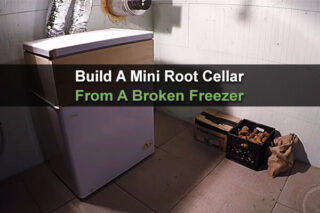
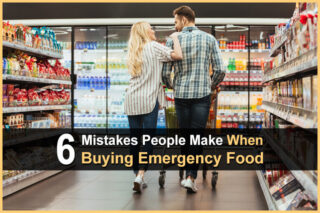
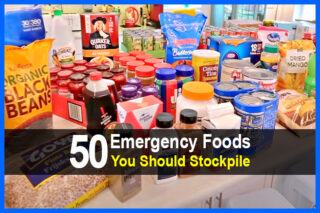

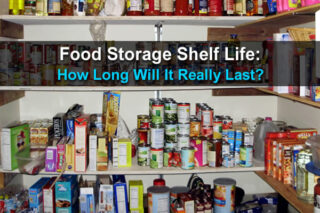
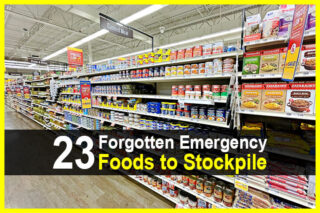


under your #3 concerning not choosing the correct storage container – a regular constant theme is using vacuum machine bagging and the poly soda bottles for long term storage …. just not adequate for storage of dry goods with an intended longevity over 5 years – need to go to a mylar bag inclusive packaging system or the conventional canning using glass jar or metal ….